Festivals in Peru are more than just colourful events. They are windows into the country’s rich history, deep-rooted traditions, and vibrant community life. Each festival has a special meaning, expressed through music, dance, food, and spiritual rituals. In 2025, exciting events will fill the calendar across cities, mountains, and villages. Whether you’re drawn to sacred ceremonies, joyful parades, or unique local foods, there’s something for every traveller. This guide to Festivals in Peru highlights the top 10 must-see celebrations that bring Peru’s cultural spirit to life.
Top 10 Festivals In Peru
Here is a list of the most famous festivals in Peru that offer cultural experiences and unforgettable trip memories.
1. La Fiesta Candelaria (Candlemas)

Photo: RicardoMarconato / Wikimedia Commons / Image For Representation Only
This is one of the biggest festivals, held in honour of the Virgin of Candelaria. It mixes Catholic traditions with Andean music and dance. The festival features hundreds of dancers in vibrant costumes, colourful parades, and traditional bands. A major highlight is the “Danzantes de las Tijeras,” who perform dangerous moves using scissors as instruments. The event lasts for over two weeks. It ends with a huge procession through the city of Puno, drawing visitors from around the world.
Festival Date: Early February
Location: Puno
Major Attractions: Scissor Dancers and a religious procession
2. Carnaval de Cajamarca
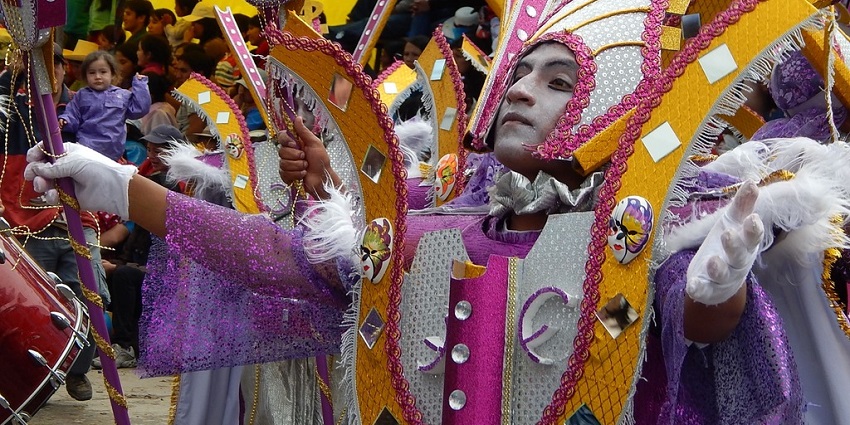
Photo: CC0 Dominio publico / pxhere / Image For Representation Only
Known as Peru’s happiest carnival, this is one of the most joyful festivals. Music, water balloon fights, paint-throwing, and street dancing fill the carnival. The celebrations include a mock wedding, traditional parades with floats, and local dishes such as “cuy” and “chicha.” Visitors can enjoy both the cultural richness and the wild, carefree fun. The entire city of Cajamarca gets involved.
Festival Date: Five days before Lent
Location: Cajamarca
Major Attractions: The “Unsha” tree-cutting and colourful water fights
3. Inti Raymi (Festival of the Sun)
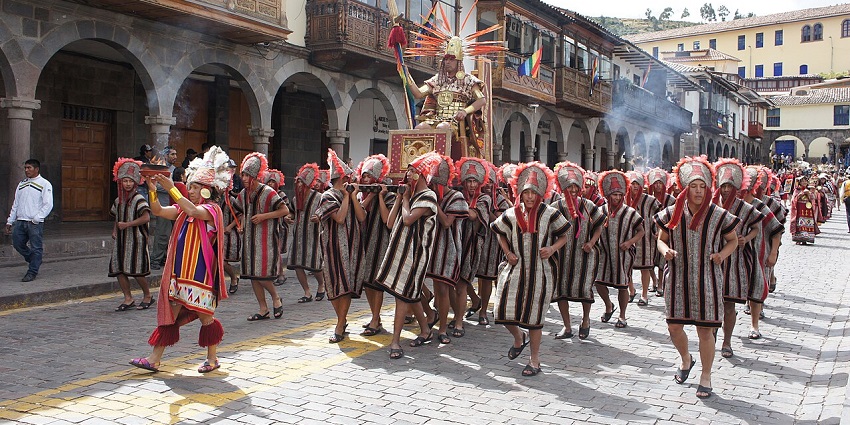
Photo: jack_g / Wikimedia Commons
Inti Raymi festival honours the Inca sun god, Inti, and celebrates the winter solstice. Actors in Cusco reenact royal Inca rituals at Sacsayhuamán for the main event. Dressed in traditional costumes, they dance and offer symbolic sacrifices to the sun. This celebration connects people with Peru’s ancient past. Tourists and locals gather to witness this grand performance, making it a key highlight of festivals celebrated in Peru.
Festival Date: June 24
Location: Cusco
Major Attractions: Reenactment of the ancient Inca ceremony at Sacsayhuamán
4. Semana Santa (Holy Week)
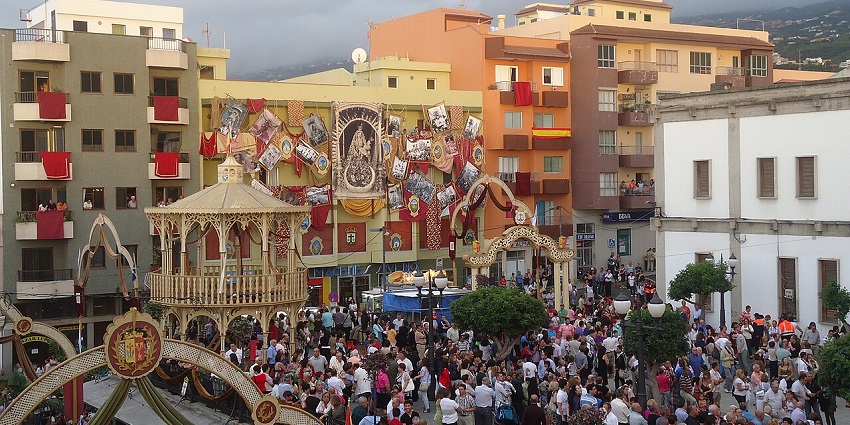
Photo: CC0 Dominio publico / pxhere / Image For Representation Only
Semana Santa is a sacred time across Peru, blending Catholic faith and indigenous customs. In cities such as Ayacucho and Cusco, locals carry floats depicting scenes from Jesus’ life. Locals decorate these floats with flowers and candles, accompanying them with music and prayers. Solemn processions fill the streets. In Ayacucho, actors perform dramatic passion plays. This event is deeply spiritual and emotional, making it one of the most moving festivals for both believers and curious travellers.
Festival Date: The Week before Easter Sunday
Location: Across Peru, especially in Cusco and Ayacucho
Major Attractions: Processions with candles, music, and artful floats
5. Fiesta de la Virgen del Carmen
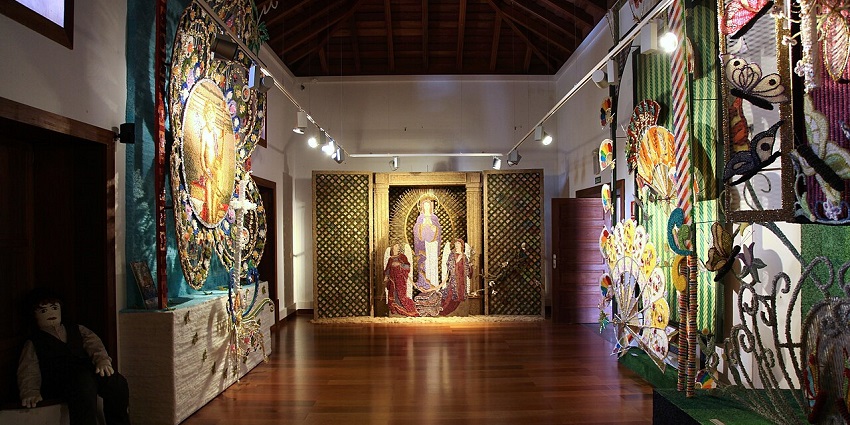
Photo: Javier1989canario / Wikimedia Commons
This lively festival takes place in Paucartambo, a small town near Cusco. It celebrates the Virgin of Mount Carmel, known as Mamacha Carmen. Locals perform dances wearing colourful costumes and masks, acting out stories from Peruvian history and mythology. The “Q’ollas” and “Ch’unchus” are the most famous dance groups. The celebration includes fireworks, music, and special meals. Thousands of people attend, including locals and visitors. I
Festival Date: July
Location: Paucartambo
Major Attractions: Masked folk dancers and processions
6. Fiesta de las Cruces (Festival of the Crosses)
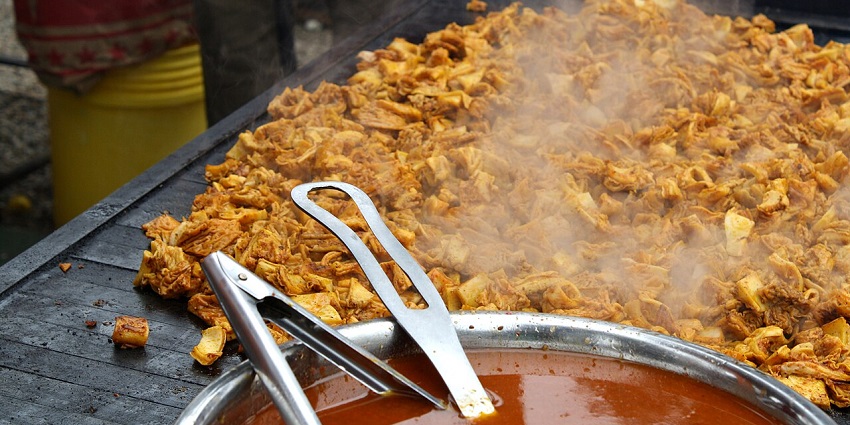
Photo: Frank Vincentz / Wikimedia Commons / Image For Representation Only
Held in towns and villages across the country, this celebration blends Catholic and indigenous beliefs. People decorate wooden crosses with flowers, leaves, and ribbons. People carry these crosses in processions with music, dancing, and prayers. In some areas, the celebration also includes traditional Andean ceremonies. It’s a community event that brings people together to share food and traditions. This festival is among the oldest festivals, offering a great way to see how different cultures mix in Peru’s spiritual life.
Festival Date: May 3
Location: Various cities and villages
Major Attractions: Flower-covered cross parades with local music
7. Mistura Culinary Festival

Photo: Renzo Vallejo / Wikimedia Commons / Image For Representation Only
Mistura is the largest food festival in Latin America and a standout among festivals. Held in Lima, it brings together top chefs, street food vendors, and farmers. Visitors can taste dishes from Peru’s coast, mountains, and jungle. Highlights include ceviche, anticuchos, and Amazonian delicacies. There are also cooking contests, talks, and workshops. This event celebrates Peru’s rich food culture and makes it easy to try many local specialities in one place.
Festival Date: September
Location: Lima
Major Attractions: Traditional and modern food booths, chef battles
8. Procesión del Señor de los Milagros (Lord of Miracles Procession)

Photo: Yandel2017 / Wikimedia Commons / Image For Representation Only
Procesión del Señor de los Milagros honours a painting of Jesus that survived an earthquake in the 17th century. Every October, believers wear purple robes and walk behind this image through Lima’s streets. Incense and religious hymns fill the air. People offer flowers and prayers along the way. This deeply spiritual event is a moving experience for many and one of the most famous festivals in the country today.
Festival Date: October
Location: Lima
Major Attractions: Multi-day religious parade with singing and incense
9. Día Nacional del Pisco Sour (Pisco Sour Day)
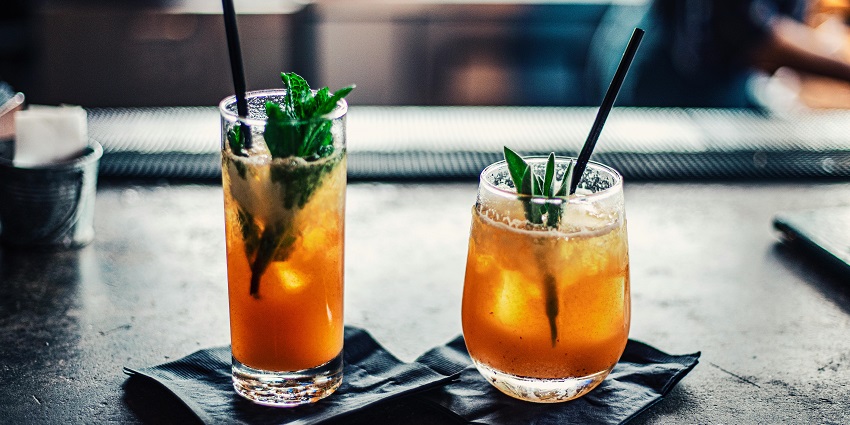
Photo: On Shots / Pexels / Image For Representation Only
This national holiday celebrates the Pisco Sour, Peru’s most famous cocktail. Held on the first Saturday of February, the day includes cocktail-making contests, tastings, and parties. Bars and restaurants across the country serve special versions of the drink. Lima is the major hub of celebration, but smaller cities also take part. Many places also offer local snacks such as ceviche and empanadas.
Festival Date: First Saturday in February
Location: Celebrated across the country, especially in Lima
Major Attractions: Cocktail tastings, live shows, and food pairings
10. Santuranticuy (Christmas Market)
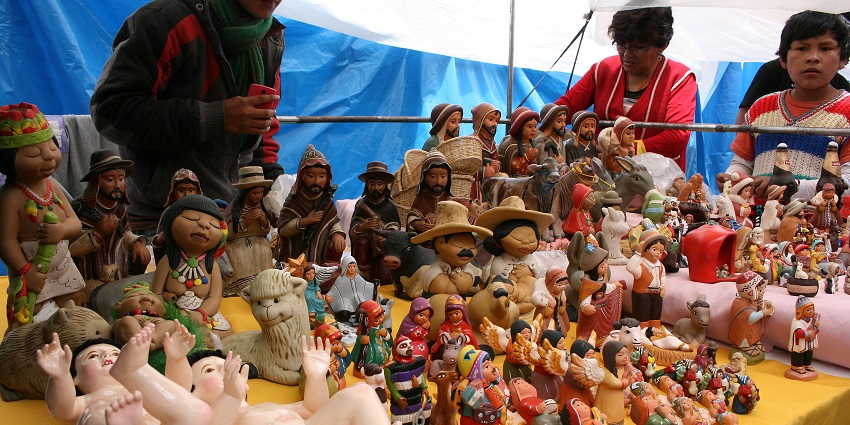
Photo: Renate Zindel / Wikimedia Commons / Image For Representation Only
Held on Christmas Eve, this market transforms Cusco’s main square into a lively fair. Artisans from the Andes come to sell handmade crafts, including nativity scenes, textiles, and pottery. Locals buy gifts, eat holiday treats, and enjoy the festive atmosphere. The market also features live music and traditional dances. It’s a joyful way to experience Andean holiday traditions.
Festival Date: December 24
Location: Cusco
Major Attractions: Nativity scenes, local crafts, and Christmas foods
Festivals in Peru are not just for show, each festival is a chance to see the mix of old and new. From Inca roots to Spanish influence, every event tells a story. Visitors can dance, eat, learn, and connect with local people. Whether you’re in the capital or a small mountain village, you’ll find music, dance, and joy. Plan a trip with TripXL, and get ready to explore the spirit of Peru through its incredible festivals.
Cover Photo: Christian Quiñones Ramirez / Pexels / Image For Representation Only


 WhatsApp
WhatsApp
 Twitter
Twitter









